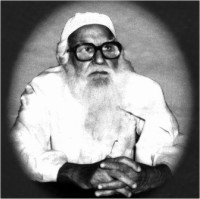| Behind the Scene
From Sirajganj
The Shalongga Revolution
Mohaimin Sagor
 Many of us, even those of us who are residents of Sirajganj, probably do not know the historical truth behind the incident of Shalongga. The Shalongga Revolution took place on January 27, 1922, and can be treated as the largest milestone in the history of the region right after the Shipahy Biplop in 1857. Many of us, even those of us who are residents of Sirajganj, probably do not know the historical truth behind the incident of Shalongga. The Shalongga Revolution took place on January 27, 1922, and can be treated as the largest milestone in the history of the region right after the Shipahy Biplop in 1857.
The Jalianwalabag case of April 13, 1919, is considered to be a major massacre in the Indian sub-continent. Approximately three hundred died and about 1500 hundred were injured. The Shalongga Revolution was much bloodier than even that. According to non-government reports at the time, the number of people dead and wounded ranged from four to five thousand. Piles of dead bodies were buried in mass graveyards beside the town of Bashudebkol at Rahmatganj and Maloti Nogor. No one can say for sure how many bodies are buried there. Amongst the survivors, many have become incapacitated due to lost limbs.
Shalongga Market, situated on the banks of the Garodaho River, used to be the largest organized marketplace of North Bengal. Cows, buffalos, cattle and other livestock were brought here from Pabna, Kushtia and Mymensingh. The market became active every week during Fridays and Mondays. On one memorable Friday, the leader of Jubo Congress, Abdur Rashid Tarkobagish, came to the market and, with 300 volunteers, publicly demonstrated his views regarding why the local people should be self-sufficient and thus desert foreign goods. On hearing the news, the Pabna District Magistrate Mr. R. N. Dash, Sub division of a Sirajganj District S. K Shingho and the Superintendent of Pabna, rushed to the Shalongga market with 40-armed policemen to disperse the aggregation of people. As part of their attempts in sedating the mob, the policemen captured, and in the process injured, the initiator Abdur Rashid. After he became unconscious from the pain, his comrades tried to protect themselves by creating a human enclosure. But before things could come under control, someone hit the Superintendent of the police on his head. Immediately afterwards, out of rage the magistrate ordered the armed police to open fire on the activists. A shower of bullets came down on the unarmed people like monsoon rain. They lost their lives like sitting ducks. Most of the livestock in the market were shot dead as well.
As soon as Abdur Rashid's father heard the news, he and his disciples marched forth and counter attacked the police force equipped with hand made weapons such as chopping knives, axes, spears, lances, javelins and bows and arrows. Thanks to some good fortune, by the time Abdur Rashid's father arrived at the scene, most of the police force's bullets were used up in the process of the mass killing and this made them disadvantaged. In the end, the magistrate and his force begged for mercy to Abdur Rashid and his father, as a desperate attempt to save their own lives.
The leader of the revolution and the first Bengali speaker of Pakistani Gono Parishad, Mawlana Abdur Rashid Tarkobagish wrote, “Never in my life have I seen such a heart breaking scene; witnessing such cruel mass murder… why it has not made its mark on history remains to be addressed.”
Copyright
(R) thedailystar.net 2007 |
|
